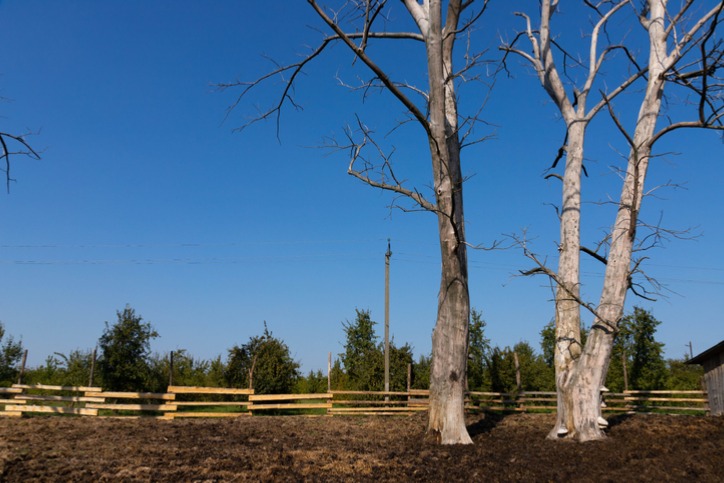TREE EDUCATION

Trees are among the most beautiful and valuable assets on our properties. That's why our certified arborists work hard to ensure tree restoration and preservation whenever possible. Yet, in some cases, such as those in which a tree is either dead or dying, tree removal is required to preserve the property, prevent damage to surrounding structures, and uphold the integrity of surrounding trees and plants. Do you know if a tree on your property is dead or dying? The best way to determine the viability of a tree is with the help of an arborist.
Here, SkyFrog Tree Services discusses four signs that indicate your tree may either be dead or dying. Contact us to learn more and to schedule Gainesville arborist service for your property!
Think of your tree's bark like its skin. Like human skin, trees' skin or bark protects them from invaders and pests. The condition of a tree's bark can indicate the presence of tree health problems and the presence of tree disease and pest infestations. Some degree of bark fallout is normal, but if your tree is shedding its bark rapidly or in large quantities, there may be a serious problem. When a tree starts to die, its bark loosens from its trunk and begins to fall off. The tree might also have missing areas of bark and vertical cracks in the trunk. When cracks are present, the affected areas pose a threat to the tree, as it signals weakness that can result in the tree toppling over in a storm or hurricane.
During certain months of the year, such as those in the fall and winter seasons, it's common for a number of different types of trees to shed some twigs and small branches in preparation for their dormant season. However, if your tree is shedding them in vast quantities and often, it's likely a sign that the tree isn't healthy. Healthy trees have branches and limbs that are flexible and resistant to high winds. If you notice a significant number of branches or twigs on the ground surrounding your tree, you should contact a certified arborist for help!
Seeing dead wood, rotted areas, fungus, or other signs of infection, is always a bad sign. If you spot any of these, you should act right away and contact our arborists to try to save the tree. If the damage is too severe or if too much of the tree has become unsalvagable, saving the tree may not be possible. Another sign that might indicate a dead or dying tree is the presence of open wounds. Branches that are torn or trees with large lacerations or splits in the wood are also of concern. In addition to these signs of tree disease, pests can infest a tree and eventually kill it. Certain types of beetles and ants, as well as termites, are just some of the pests that can kill even a very healthy tree.
Depending on how old and well-established a tree is, its roots likely run very deep under the surface of the soil. As a result, determining damage to root structures isn't always easy. If you are able to spot damage or signs of change to your tree's roots, contact a certified arborist for help. Trees with shallow or partially exposed roots that show small changes can signal the tree is exposed to poor soil conditions or extreme weather, among other issues. Some signs of root damage to look out for include dead or dying branches, wilted leaves during the growing season, undersized leaves, poor growth over the year, and foliage that is thinning.